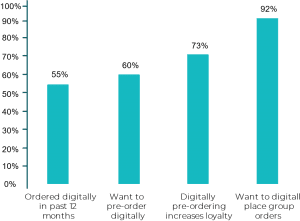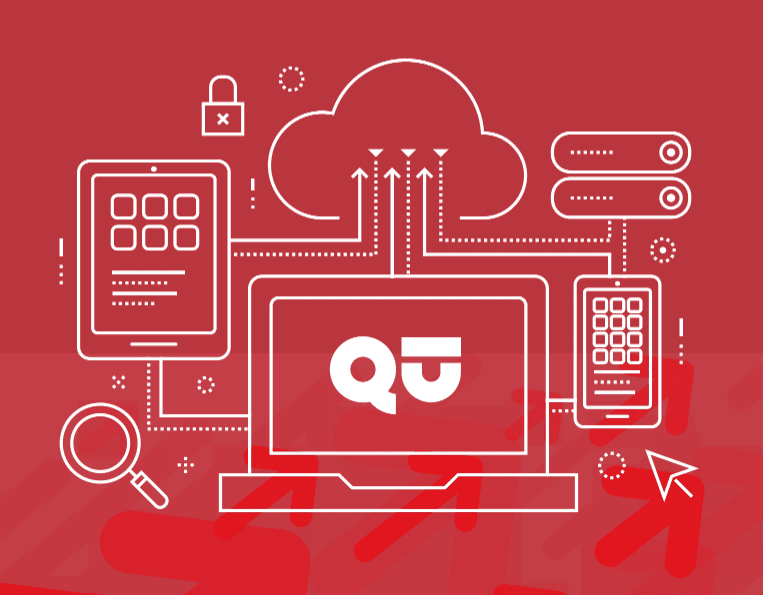MOBILE / ONLINE SERVICES
According to Forrester, over 77% of all American adults own smartphones and over 94% access the Internet daily. As a result, the phone has become the go-to source for consumers to instantly access information and perform tasks. From a restaurant perspective, guest requests center around two main areas: 1) the ability to digitally place online orders and 2) being rewarded through their digital loyalty program. The charts below demonstrate the importance restaurant guests place on the ability to engage via technology. As a result, enabling digital platforms in restaurants is no longer a nice-to-have; it is instead a requirement.


SELF-SERVICE KIOSKS
THIRD-PARTY DELIVERY
CLOUD-SERVICES
SMART DATA
MOVING TOWARDS THE FUTURE
Keeping on top of where the industry is going and wanting to move towards the future is the easy part, understanding where you are and knowing what to do to reach your end goal is more difficult. At Qu we are committed to partnering with clients to ensure their technology solutions support their goals today and position them for future success. To learn more or to schedule a demo, please visit our website at www.qubeyond.com or email sales@qubeyond.com.
About Qu™
Qu™, formerly Gusto®, is going beyond traditional Point of Sale (POS) technology with a singular focus on fast casual and quick service restaurant chains. Leveraging an API-first approach and a core suite of omni-channel ordering solutions, Qu delivers an enterprise-scale, cloud-based POS solution that’s fast, flexible, and forward-thinking, making it easy to implement, easy to use, and easy to afford. Improved guest experience, best-in-class integrations, and centralized enterprise management are some of the reasons leading restaurant chains choose Qu to help them move faster, stay nimble, and increase profits. Learn more at qubeyond.com or email sales@qubeyond.com.
